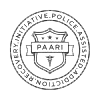
By LYLE R. FRIED, CAP, ICADC, CHC In Addiction Withdrawal, Tools for Recovery
Posted May 12, 2018
In 2016, an estimated 2.1 million people in the United States were addicted to prescription pain medications. An additional 626,000 people had substance abuse disorders related to heroin use. Thousands of these individuals died from opioid overdoses, a startling number that only continues to climb.
According to the National Institute on Drug Abuse (NIDA), medication is one solution to the opioid crisis. The most commonly used medications to treat opioid addiction are methadone, buprenorphine, and naltrexone.
Per NIDA, these medications are effective, but they’re also underutilized. NIDA reports, “Fewer than half of private-sector treatment programs offer medications for opioid use disorders, and of patients in those programs who might benefit, only a third actually receive it.”
Misunderstandings and other barriers preventing widespread adoption of these treatments need to be overcome in order to save lives. With this goal in mind, here’s a look at four medications that treat opioid addiction.
Methadone
Methadone lessens the pain associated with opiate withdrawal and blocks the euphoric effects of opioids like painkillers and heroin. It’s offered in pill, liquid, and water forms and must be taken once a day.
This medication is available only by prescription and must be taken under the supervision of a medical professional. Methadone itself can be addictive, and treatment must be stopped gradually to avoid withdrawal, which is one reason the medication has some critics.
Patients generally receive treatment for a minimum of 12 months, but some may take methadone for years. Critics believe this is simply a form of addiction replacement and does not truly help the individual recover from their addiction.
However, methadone is safe and effective if taken exactly as prescribed. It’s far less dangerous than heroin and prescription pain medications, and it allows people to lead productive and meaningful lives. For best results, methadone should be one component of a recovery plan that includes counseling and social support programs.
Buprenorphine and Naloxone
Buprenorphine
Unlike methadone, buprenorphine can be prescribed or dispensed in a physician’s office (instead of in a highly structured clinic setting). This increases access to medication-assisted treatment, which is a step in the right direction.
Buprenorphine diminishes cravings and withdrawal symptoms, allowing users to recover from physical dependency. It’s an opioid partial agonist, meaning that it produces similar effects, including euphoria and respiratory depression (slow breathing). However, these effects are not as strong as drugs such as heroin and fentanyl .
These opioid effects increase with each dose until they stabilize at moderate doses, even if future doses are increased. The “ceiling effect” lowers the risk of side effects, dependency, and misuse.
Buprenorphine with Naloxone
Of course, misuse is a common concern when it comes to buprenorphine because of the opioid effects it produces. For this reason, it is generally used in combination with naloxone. Naloxone blocks opiate receptor sites, reversing or suspending the effects of an overdose.
When buprenorphine and naloxone are used together, buprenorphine’s opioid effect dominates, while naloxone blocks opioid withdrawals.
Naloxone
Naloxone is also used independently and can be administered as an injection or via a nasal spray. Often referred to by the brand name Narcan, Naloxone is available by prescription. However, people who are at risk of an opioid overdose or know someone who is can typically gain access by “standing order” without a prescription.
When someone is overdosing from opioids, Naloxone can be used to restore normal breathing and suspend the effects of the overdose until emergency assistance arrives. Although the medication has real life-saving potential, rising costs limit accessibility.
Naltrexone
While methadone and buprenorphine activate opioid receptors in order to prevent cravings, naltrexone blocks opioid receptors instead. This blocks both the pain relief and euphoria associated with opioids and is also said to reduce cravings. It can be prescribed by any licensed healthcare provider and comes as a pill or injectable.
With naltrexone, there’s no potential for abuse or dependency. If someone relapses while using naltrexone, the medication blocks the “high.” However, this may result in reduced tolerance for opioids, and people on naltrexone may be unaware of their increased sensitivity to even low doses of these drugs. If an individual on naltrexone relapses with the same dosage of opioids used previously, it’s possible that this dosage would be fatal.
Summary
There’s no perfect solution to the opioid crisis, and all of the medications commonly used to treat opioids do have some drawbacks.
Methadone and buprenorphine, for instance, can be addictive themselves. This isn’t a possibility with naltrexone, but patients who relapse while on naltrexone may be especially at risk of fatal overdose.
Still, these medications are far safer than opioids like heroin, fentanyl, and prescription pain medications. In combination with counseling and social support, medically assisted treatment can save and transform lives. To combat the opioid crisis, increasing access to these medications is essential.
If you or a loved one is suffering for opioid addiction contact one of our addiction specialists at 1-888-249-2590 or click here.













